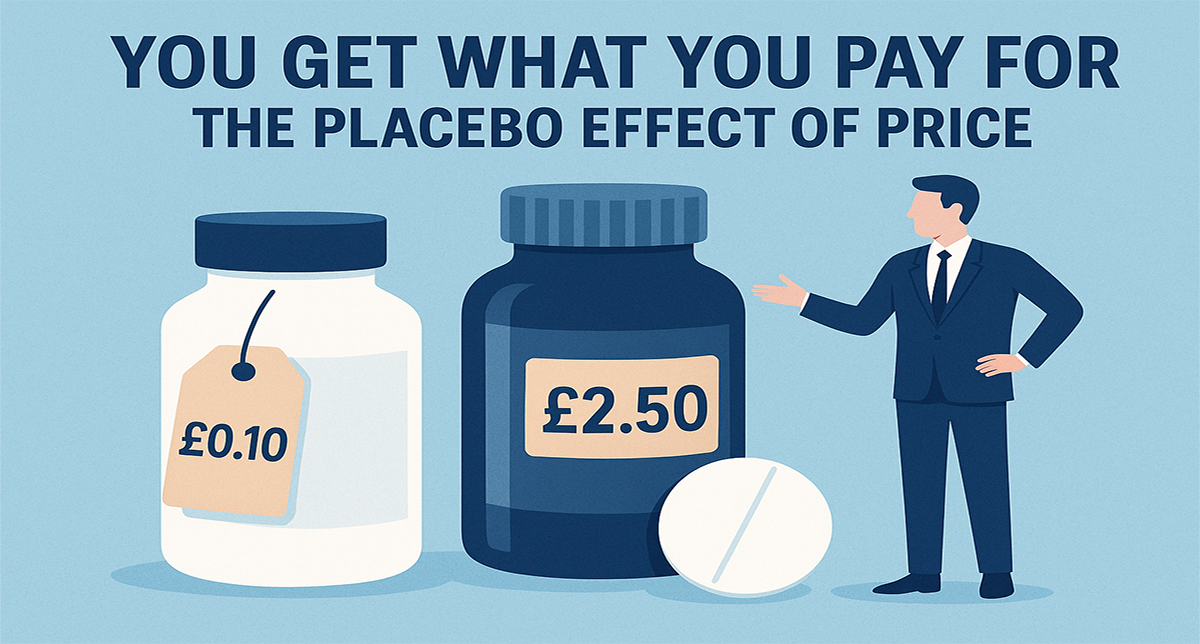The Study That Launched a Thousand Headlines
On March 5, 2008, Duke University (via MIT collaborators) released a provocative finding: 85% of participants reported pain relief after taking the $2.50-labeled placebo hair-trigger response, versus 61% in the cheap-looking group. Conducted under controlled conditions, volunteers received mild electric shocks before and after the placebo. This experiment highlights how consumer expectations, shaped by cues such as price, can dramatically influence subjective outcomes.
Co-author Dan Ariely, a behavioural economist, suggested that the effect isn't in the active ingredient (there is none), but in the enthusiasm it evokes. He proposed that even physicians' delivery and packaging cues could enhance therapeutic results, and that generics might suffer from inherent expectation bias.
Confirmation from Parkinson’s Research
A follow-up study published in Neurology tested 12 Parkinson’s patients using fake injections of saline labelled as either $1,500 or $100 versions of a dopamine-boosting drug. The result? Those who believed they received the expensive version improved about 9% more, with 67% showing marked improvement versus 58% on the cheaper version. In short, belief in higher value translated into tangible motor improvements, even though the content was identical.
The Scientific Underpinning
These findings are echoed by literature showing that contextual cues, like framing or price, powerfully modulate placebo analgesia. A clinical commentary in the Journal of Clinical Psychiatry noted that cheaper generics might elicit lower placebo benefits due to patient expectations, recommending that clinicians reassure patients when prescribing lower-cost alternatives.
From a neuroscience perspective, imaging studies show that brain activation patterns vary depending on expectations induced by marketing cues, requiring more "mental effort" when fewer expectations are met.
Beyond the Pill: The Marketing Placebo Effect
This "price placebo" isn't limited to pharmaceuticals. In consumer markets, the phenomenon is referred to as the marketing placebo effect, where marketing actions like price, packaging, and branding shape perceived efficacy, even when product quality is the same.
- A sensory study from INSEAD and the University of Bonn showed that identical wines were rated better when labelled with higher prices, confirmed with neuroimaging of reward centres. Beauty marketing exploits similar psychology: luxury packaging and high price tags consistently create stronger satisfaction, even when formulas are identical, highlighting how pricing and presentation foster positive perception.
What Does This Mean for B2B Communication?
If you’re a content strategist, brand consultant, or copywriter crafting campaigns or positioning B2B products, here's what this research suggests:
- Perceived Value Is a Key Differentiator Price, design, even narrative can elevate your product beyond its functional features. An elevated price tag, premium-leaning packaging, and confident messaging signal quality, even before the first user interaction.
- Craft the Narrative Carefully If you offer cost-effective solutions, position them with equal confidence. Messaging like “affordable, yet fully capable” helps counteract natural biases toward higher costs implying quality.
- Reinforce through Delivery In healthcare, Ariely noted that physician enthusiasm elevates effectiveness, similarly, your sales team’s conviction and delivery style can enhance perceived product performance.
- Use Packaging and Presentation as Strategic Tools Whether it’s digital assets, brochures, or physical materials, presentation can prime expectations. Sleek design, thoughtful layout, and premium feel contribute to a high-quality impression.
- Educate Audiences on Expectation Bias Transparency about the power of expectations can itself be a selling point, demonstrate that your product generates results beyond what meets the eye.
- Support Cheaper Alternatives with Confidence If you offer lower-cost or generic solutions, pair them with customer testimonials, clinical data, or success stories to counteract inherent low-expectation bias.
Putting Theory Into Practice: A 600-Dollar Example
Imagine you're marketing industry-standard software that performs the same core functions as a cheaper competitor, but costs 600 GBP more. A rational buyer might pause, thinking: “Why pay more?”
Instead, frame your message to highlight:
- Strategic Support and Trust: Maybe your customer service and SLAs make the difference.
- Perception Equals Performance: If users believe the tool is premium, their adoption rate and satisfaction may rise.
- Reassurance of Value: Emphasize reliability, onboarding, ROI, providing rational justification that meets emotional expectations.
By addressing both the cognitive and the affective, you frame higher cost as not just justified, but beneficial—not because of feature parity, but because of perceived quality and confidence it inspires.
Final Thoughts
The “you get what you pay for” placebo effect isn’t just a quirky psychology experiment, it’s a robust insight into how expectations shape reality.
For B2B communicators:
- Use pricing and presentation strategically to shape positive expectations.
- Don’t let low-cost undermine credibility, packaging, narrative, and confidence can compensate.
- And always back up premium positioning with substance, because while placebo can elevate, the promise must be deliverable.
References & Suggested Reading
- Original Duke/MIT placebo pricing study (JAMA letter, 2008) today.duke.edu PubMed
- Parkinson’s placebo price study, Neurology 2015: 9% improvement and 67% “very good” responses Los Angeles Times American Academy of Neurology TIME
- Marketing placebo lens: contextual factors influence placebo analgesia ResearchGate
- Psychopharmacology context: clinicians should reassure on generic efficacy Psychiatrist.com
- Wine pricing neuroscience study, INSEAD/Univ-of-Bonn Food & Wine
- Luxury beauty marketing placebo effect Allure






